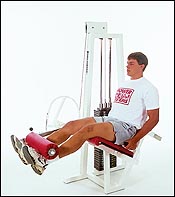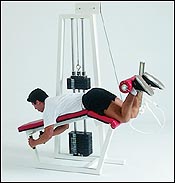



fitness lifestyle running job
Breaststroke is the slowest of the four official styles in competitive swimming. The fastest breaststroke swimmers can swim about 1.57 meters per second. Although it is the slowest of the four competitive strokes, it is commonly agreed that it is the one of the most difficult when done correctly. It is also often the hardest to teach to rising swimmers due to the importance of timing and the coordination required to move the legs properly.
Breaststroke is swum while leaning on the chest, with the arms only breaking the surface of the water slightly and legs always underwater, while the head is underwater for the second half of the stroke. The kick is sometimes referred to as a "frog kick" because of the resemblance to a frog's kick, but when done correctly it is more of a "whip kick" due to the whip-like motion that moves starting at the core down through the legs.
The body is often at a steep angle to the forward movement. This slows down the swimmer more than any other style. Professional breaststrokers use abdominal muscles and hips to add extra power to the kick, although most do not perfect this technique until the collegiate level. This much faster form of breaststroke is referred to as "wave-action" breaststroke and fully incorporates the whip-kick.
A special feature of competitive breaststroke is the underwater pullout. From the streamline position, one uses the arms to pull all the way down past the hips. As the arms are pulling down, one downward dolphin kick is allowed (as of the 2005 season), though still optional (However, any upward motion with the dolphin kick is strictly forbidden, and will result in a disqualification). This is followed by the recovery of the arms to the streamline position once more, and then a kick. The pullout at the start and after the turns contributes significantly to the swimming times. Therefore one way to improve the swimming times is to focus on the start and the turns.
Of the four competitive strokes of swimming, breaststroke is the most efficient in terms of energy consumption over a specified distance, though it is the slowest.
Information from wikipedia


The history of swimming goes way back to that of prehistoric times. Books written from 2000 to 1500 BC including the Bible have references to swimming. It was mostly used in these times as a means of cleansing. Any form of competitive swimming wasn’t formed until the 1800’s in Europe. It was included in the first Olympics in 1896 in Athens, Greece.
It was noted that Ancient Egypt had cave drawings of humans swimming in the nearby sea. They often depicted a form of the breaststroke as the first type of swimming or something they used to call the front crawl. Ancient Egyptian, Grecian and Roman palaces were often equipped with swimming pools or baths. Often reserved for the elite that used them as relaxation pools and cleaning tubs.
It is noted by historians that swimming was also often used in battle. The Greeks were often regarded as solid swimmers and at the Battle of Salamis after a number of both Greek and Persian boats were destroyed it was said that all of the Persians drowned due to their inability to swim while the Greek prevailed.
The history of swimming is much easier to understand than other sports. Without any equipment to speak of an individual can take to the waters. Obviously those countries that had the most access to water were the first to adapt to swimming. History did not have the spreading of the sport as many other sports had encountered because it was basically already available. You either adopted swimming as a means of life or you just chose not to swim.
The evolution of swimming history expanded during the middle ages. A number of individuals took it upon themselves to write books about swimming. They were often focused on the ability to not drown rather than a perfect backstroke as you would imagine. Life saving concepts and techniques began to form throughout the next few hundred years and around the 18th and 19th century the sport began to evolve into more of a competition than just life safety. Swimming Associations and Clubs popped up all over the world. Some of the first in swimming history were in China, Sweden and Germany.
Schools began to believe that swimming was a natural part of any life education. Therefore, they began to teach swimming in schools not just as a life safety course but as an extracurricular activity. Schools and Universities began to adopt these practices and set up clubs and swim teams. Competitions began to arise around the mid 1800’s. England was the first to modernize the sport and incorporate an indoor swimming pool with a swim team. They began to formulate new swimming styles including the sidestroke. Shortly after this, variations of the freestyle began to form and credit can’t really be given to one person as so many were responsible for developing this technique.
The Olympic Games of 1896 in Athens was the first real platform for the sport. There only men competed in a number of events. Throughout the 1900’s the sport evolved and saw a number of stars arise. Johnny Weissmuller, the original Tarzan completed his ten year career by never losing a race and winning five Olympic medals.
Science and technology began to play a part in the sport throughout the 1900’s as well. When scientist and coaches began studying swimmers and there underwater techniques to improve times. The swimsuits began to change as well as any form of resistance was under scrutiny from all competitors. Goggles, swim caps and different variations of training have all evolved as well. The US has seen its share of great Olympians going back to Mark Spitz who won seven gold medals in the 1972 Olympics.
The sport has evolved to a very competitive and fun sport for anyone. That has always been the great appeal that anyone can swim and we have been for the past 3000 years…So goes the history of swimming.
Article Source: ArticlesBase.com - History of Swimming

Then took the other, as just as fair
And having perhaps the better claim,
Because it was grassy and wanted wear;
Though as for that, the passing there
Had worn them really about the same,
And both that morning equally lay
In leaves no step had trodden black
Oh, I kept the first for another day!
Yet knowing how way leads on to way,
I doubted if I should ever come back.
I shall be telling this with a sigh
Somewhere ages and ages hence:
two roads diverged in a wood, and I --
I took the one less traveled by,
And that has made all the difference.

每个人总有这么的一个阶段,尤其是孩童时期,总是会相信,甚至创造一个精灵、仙子或是外星人的角色。我们深信这些角色是善良的,会带我们去完成不容易实现的任务,会在一旁的守护着我们,倾听我们的声音,知道我们。
我 的小时候就是这样,老爱看月亮,跟月亮说话,月亮也会一直看着我。如果没有把记忆混淆的话,应该是在近圣诞节时期。爸爸也把传说中的圣诞老人带到了我的现 实生活中,他让我在二楼的露台前大声的对圣诞老人说出我想得到的礼物。圣诞老人也从没令我着幼小的心灵失望,爸爸给了我一个了不起的开始,也因此成就了现 在还爱发梦的我。是混淆了也好,不是也罢,月亮和露台,这个画面是到现在还很熟悉的、很温暖的。
所以故事中的——月光精灵,就这样联想出来了。
月光精灵只在晚上出现。因为晚上很黑很暗,他们会帮忙我们照亮,照亮我们的心,使我们更加勇敢也让我们安心的睡觉,这样我们的身体才会健康。就在一天的晚上,他们发现了还在工作到深夜的老公公和老婆婆。于是,他们就多了一份任务去帮助他们。
老公公和老婆婆其实是一个魔法师,但是他们没有高强的法力。他们把大家不要的东西,用他们的一双手再次的赋予新的生命,新的使命。
你也可以叫他们环保老公公和环保老婆婆。
现在大家都在谈环保,环保不是只有大公司、政府或是首领才能做到的,环保也有小的做。学习从自己开始做。这样多多个‘小小的自己’集合在一起,就可以是一个大机构了。希望故事里头的老公公和老婆婆,可以再一次的提醒你走入环保的潮流里。
故事中,以上的角色也将遇到了强调物质享受、浪费成性,欺压弱者的钱夫人。故事的发展,钱夫人一样会有恶报的惩罚。可是,她还是得到了宽恕,善的引导。
世界上就多了一个好人,不是更好吗?

搖滾天團五月天╳暢銷作家九把刀
四十五把圓月彎刀 跨界同名全新創作
封面由知名設計師聶永真全心打造
六個朋友、十八個夢想,
一場帶著鏟子去參加的婚禮,
一個埋藏青春與勇氣的樹洞。
不想長大嗎?
不想成為朋友們正在成為的那些大人嗎?
現在,我們要對十年後的自己投下一張信任票。
絕對……絕對不要成為我們看不起的那種大人。
於是,我們在學校後面大樹下挖了一個洞。
各自將我們的夢想寫在紙條上,封印在登山水壺裡,將覆蓋在上的土踏實。
隔天畢業典禮,十年如滄海一聲屁過去。
沒人記得那個洞。
但女神于筱薇這場無與倫比的美麗婚禮,
一把鐵鏟,一聲槍響,奇妙地將我們召喚回集體打手槍的那晚。
我們都忘了當年到底寫了什麼,藏在那個約定的洞中。
但我們決定, 不管這些夢想多麼困難奇怪,所有人都要努力幫對方完成……
「你不能害怕你不相信的東西。」
只有幼稚的人,才能改變這個世界。
因為他們幼稚到,完全不懂得害怕。
作者簡介
九把刀 Giddens
1978年製造於台灣彰化。
自1999年開始創作,至今完成45本書,
作品陸續改編為電視劇、電影、線上遊戲。
是當今華人文壇創作幅度最大的作家。
是最幸運的人,也是最努力的人。
人生啊……
如果遇到了「那个女孩」,到时候我的人生才被「强制往前推进」也不错吧。
在那之前,我只要愉快地等待,快乐地放肆就行了吧,哈哈!
1. Warm Up

10 minutes


This is a good variation of the traditional barbell squat. This is good for developing the outer sweep of the thighs.
3 x 10times

3 x 10times x 25kg
6. Leg Curl Machine

This machine is one of the best hamstring exercises. Some gyms may have a leg extension and leg curl machine built into one machine, like in most home gym machines.
3 x 10times x 25kg
7. Leg Adduction / Abduction Machine
 Leg Abduction Machine |  Leg Adduction Machine |
3 x 10times x 50kg each
3 x 10times
9. Lunges
3x10timesx10lbs each hand
10. Squat
Stand in position shown, keep wider than shoulder width apart, toes facing slightly out for balance then bend your knees keeping your back straight until your thighs are parallel with the floor then straight your legs and stand up again. Perform the exercise slowly and do not bounce at the bottom of the exercise. Keep hands held yout in front of you for balance or cross them across your chest.
For a bit of variety either perform the exercise very slowly or very quickly so that you jump a few inches off the ground at the top of every movement.


Flora Bay Resort; a “true Malaysian style holiday resort”! Offering 5-star services in a more relaxed & friendly atmosphere. A family own beach resort, Flora Bay Resort open its door to Perhentian Island’s international guests in since 1990.
Our resort is situated on a beautiful long sandy beach of Teluk Dalam. Facing the south; our resort offers brilliant view of Lang Tengah, Redang Island and other islands nearby.
All of our 80 rooms and bungalows are just a few steps away from the water! In fact, your night sleeps will seems to be serenaded by the graceful sound of gentle waves breaking just outside your doorstep!
Beautiful nature, breathtaking sea view, cozy and comfortable resort facilities coupled with attentive, personal and friendly service; Flora Bay Resort is perfect for everyone; whether you are a lonely traveler, couple on honeymoon, family, young or old…..we will make your stay with us the most enjoyable and memorable one!
See you in “paradise”….
Our resort facilities
80 guest rooms & bungalows
• 5 Different room standards
• Right by the ocean
• Private balcony
• King, Queen or Super Single size beds
• Wardrobe
• Private bathroom & toilet
• Hot water(except for Hill View)
• Mini fridge in each room (except for Hill View)
• Cleaned daily
• 24 hours electricity
Broadband internet
• Internet Cafe - Open from 9am till 11pm
• Internet surfing and emails
• Wireless internet services
Conference hall
• Seats up to 100 guests
• Dinner party
• Meeting & Seminar
• Equipped with state of the art audio & visual equipment
Other services
Laundry service
Complimentary Safety Deposit box for each room
Movie show at the restaurant
Boating
IDD Telephone calls - iTalk phone
Air, Train and bus ticket bookings & other travel arrangements
Shopping
Souvenir Shop
• Memory gifts
• Local handy craft
• Batik products
• Shirts
• Everyday necessities
• Toys
Our Restaurants

2 restaurants
• Open from 7am till 10.30pm
• Wide variety of local favourites (Malay, Indian and Chinese food)
• Popular western cuisines
• Fresh Seafood
• Fresh local juices
• Special BBQ Dinner party (upon request & special occasion)
• Special set Lunches and Dinners (special occasion)
• Movie DVDs
• Cable TV (movies, sports, news, Discovery & NGEO)










 | Usher Ft. Beyonce & Lil' Wayne - Love In This Club Part II (Main) .mp3 |  |
 | ||
 | Found at bee mp3 search engine |  |